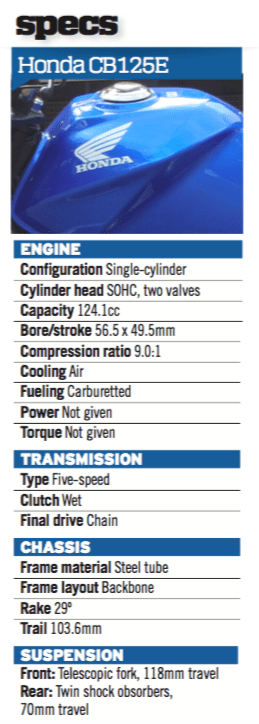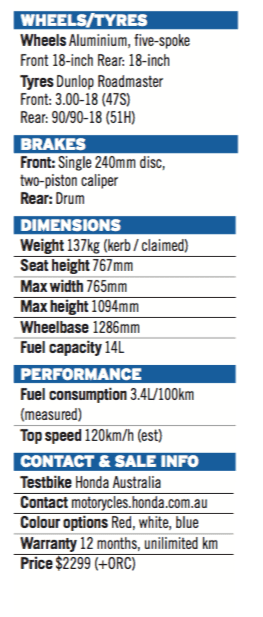We couldn’t finish our series of LAMS specials without looking at Australia’s most economical learner-approved bike: the Honda CB125E. For a mere $2299 (+ ORC) you can have your own brand spanking new motorcycle. So what do you get for that amount of money? Well, in mechanical terms you get a 124.1cc carburetted single-cylinder air-cooled engine, a five-speed gearbox, and a package built to Honda’s renowned quality standards. In more general terms you get a little ripper of a bike with many things going for it.
First and foremost, it’s cheap to run. That fuel gauge goes down so slowly you might suspect it’s broken. Over a fortnight of ‘spirited’ commuting I measured 3.4 litres per 100km, or to put it into dollar terms for a round trip of 50km a day, about $8.50 a week in petrol. Those numbers will certainly attract Honda’s target market of uni students and low-income learners, and in tight economic times could appeal to others too.
While doing these LAMS tests there has been some talk in the office about the benefits of learners starting on underpowered bikes, and not just because it keeps them out of trouble, but also because it helps them develop their skills at the lower end of the performance scale and makes them truly appreciate a bigger machine when they finally take the step up. This is definitely true for the CB125E. While the 765mm width allows you to easily filter to the front of the queue, what do you do when you get there? If you’re riding a 650cc learner bike it doesn’t take much skill to surge ahead of traffic, but try it on this little number and you’ll need to be good at shifting up through the gears. I’m not sure if mechanical sympathy is the right term for what you learn, given that you are usually wringing its neck, but it will help you get in synch with the machine. It also improves right wrist flexibility.
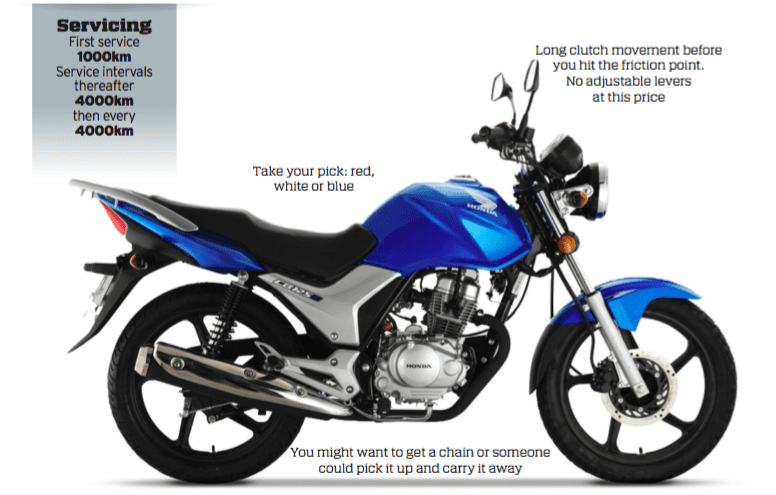
Similarly, although the kerb weight of 137kg doesn’t call for serious stopping power, add a heavier rider (and a pillion if you’re game) and the single disc front brake and drum at the rear – without ABS, naturally – will struggle to do their job quickly. That means you’ll need to be on your game when approaching intersections and other potential hazards. Again, I think that’s a good thing for a learner to get used to.
The bike’s weight is a double-edged sword. It’s great for manoeuvrability and light steering, but for slow riding and even cornering I prefer a heavier bike in order to feel more planted and stable. The dimensions are also small for a tall person, especially around the foot controls. However, for slighter riders the CB125’s modest size and weight might be just right.
Of course, there are other aspects of the bike that simply reflect the specs and price point. The engine lacks low-range punch – I looked down at the gear indicator a couple of times to check if I was in first or neutral. The seat will give you numb bum after about 45 minutes. And the dash is rudimentary – the right-hand side would have been the place to put a tacho or even a clock, but it’s been left blank.
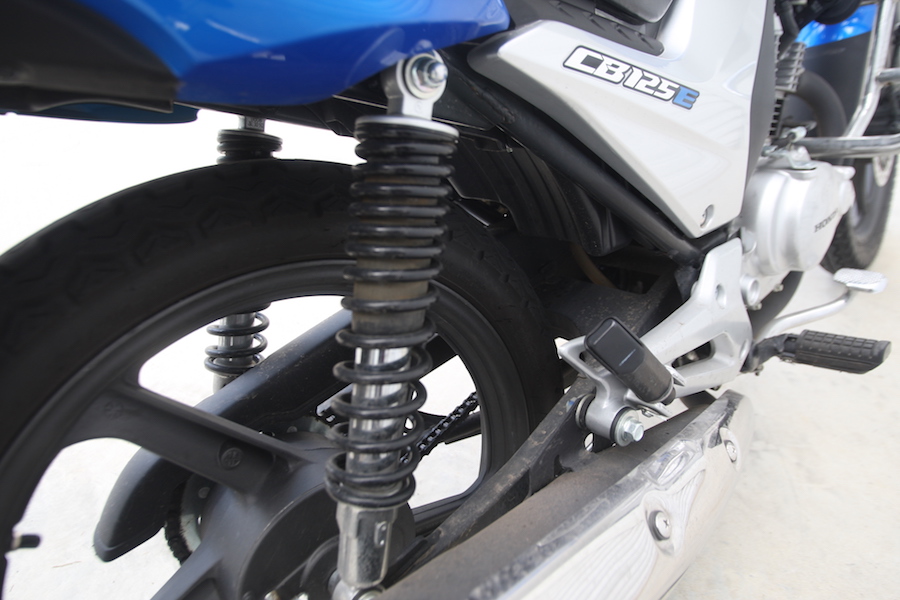
On the flipside, it’s nice to see a bike that doesn’t put on false airs. The mirrors are homely, but unlike some more sharply styled models, they’re easy to adjust. Those mirrors, along with the basic dash mentioned above and the round headlight aren’t really retro, they’re simply ordinary no bullshit fittings. And although the CB125E fits nominally within the naked section of the model range, I was pleased to see that Honda has not tried to sell this model as a nakedbike; better to say it’s a machine that has not been dressed up to look like something it’s not.
In a world where we are surrounded by excess there is something very pure and honest about this little air-cooled single. Call it a philosophy – use what you need and no more. Sure, that’s not really the ethos that drives the big-bore motorcycle industry, but Honda’s cheap and cheerful CB125E package will give you pleasure in other ways. And there are many roads to happiness.
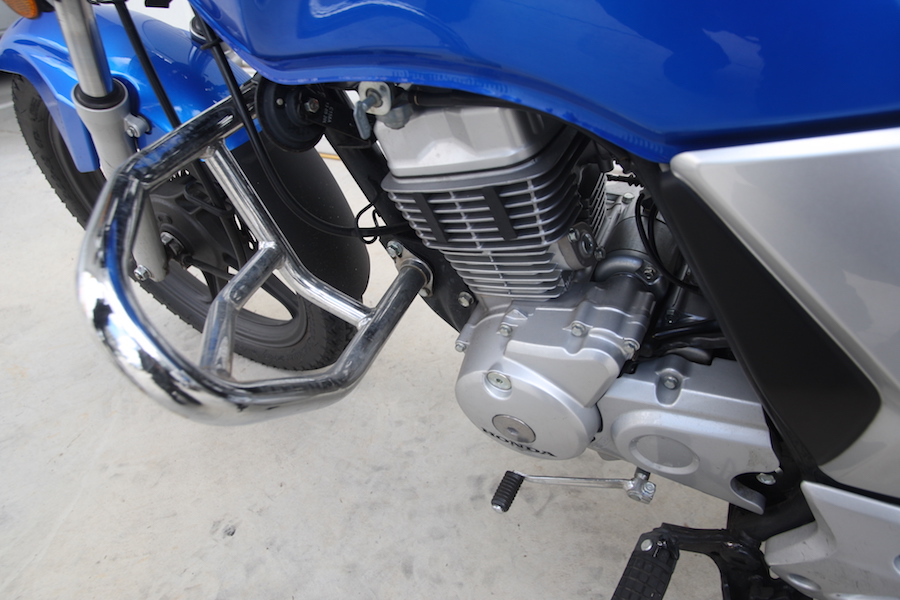
Pros
Cheap to buy
Cheaper to run
Quality build
Cons
No tacho
Small proportions
Hard seat
TEST MARK VENDER PHOTOGRAPHY DARREN KERSEY
